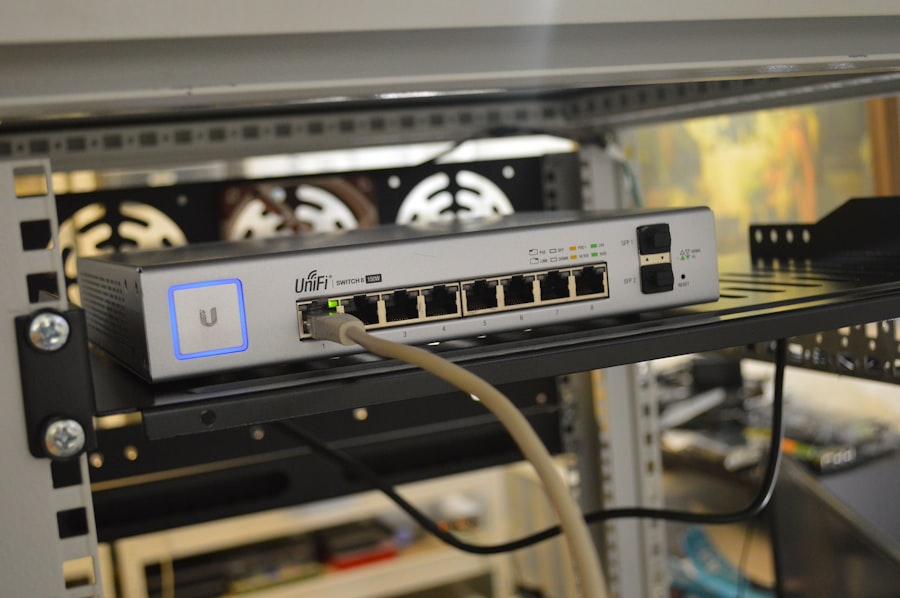In the modern landscape of warfare and defense, the significance of securing Operational Technology (OT) networks within military contexts cannot be overstated. These networks, which encompass the hardware and software that detect or control physical devices, are critical for the effective functioning of military operations. They manage everything from weapon systems to logistics and supply chain management.
A breach in these systems could lead to catastrophic consequences, including the loss of sensitive information, disruption of operations, and even endangerment of lives. Therefore, safeguarding these networks is paramount to maintaining national security and operational integrity. Moreover, the increasing interconnectivity of military OT networks with civilian infrastructure has introduced new vulnerabilities.
As military systems become more integrated with commercial technologies, they face a broader array of cyber threats. This convergence necessitates a robust security framework that not only protects against traditional threats but also anticipates and mitigates emerging risks. The importance of securing military OT networks extends beyond immediate operational concerns; it encompasses strategic deterrence and the preservation of technological superiority in an era where cyber warfare is becoming increasingly prevalent.
Key Takeaways
- Securing military OT networks is crucial for national security and defense operations.
- Vulnerabilities in military OT networks can be exploited by malicious actors, leading to potential breaches and disruptions.
- Access control measures should be implemented to restrict unauthorized access to military OT networks.
- Encryption and authentication protocols are essential for ensuring the confidentiality and integrity of data in military OT networks.
- Monitoring and detecting anomalies in military OT networks is necessary to identify and respond to potential security threats.
Identifying Vulnerabilities in Military OT Networks
Identifying vulnerabilities within military OT networks is a critical first step in fortifying their defenses.
Conducting thorough assessments and audits of existing systems is essential to uncover potential weaknesses.
This process often involves employing advanced tools and methodologies to evaluate the security posture of OT networks, ensuring that all components are scrutinized for potential flaws. Additionally, human factors play a significant role in the vulnerability landscape. Personnel may inadvertently introduce risks through negligence or lack of awareness regarding cybersecurity protocols.
Social engineering attacks, where adversaries manipulate individuals into divulging sensitive information, are particularly concerning in this context. Therefore, a comprehensive approach to identifying vulnerabilities must encompass both technological assessments and an evaluation of human factors, ensuring that all potential entry points for cyber threats are addressed.
Implementing Access Control Measures for Military OT Networks

Access control measures are fundamental to securing military OT networks against unauthorized access and potential breaches. These measures involve defining who can access specific resources within the network and under what conditions. Implementing role-based access control (RBAC) is one effective strategy, allowing organizations to assign permissions based on the roles and responsibilities of personnel.
In addition to RBAC, multi-factor authentication (MFA) should be employed as an additional layer of security. MFA requires users to provide multiple forms of verification before gaining access to sensitive systems, significantly reducing the likelihood of unauthorized access.
By combining these access control measures with regular audits and reviews of user permissions, military organizations can create a more secure environment that is resilient against both external and internal threats.
Utilizing Encryption and Authentication Protocols
| Protocol | Encryption Strength | Authentication Method |
|---|---|---|
| SSL/TLS | Depends on configuration | Certificate-based |
| IPsec | Depends on configuration | Pre-shared key or digital certificates |
| SSH | Depends on configuration | Public key or password |
Encryption serves as a cornerstone for securing communications within military OT networks. By converting sensitive data into an unreadable format, encryption ensures that even if data is intercepted by malicious actors, it remains protected from unauthorized access. Implementing strong encryption protocols for data at rest and in transit is essential for safeguarding classified information and maintaining operational security.
Authentication protocols also play a crucial role in ensuring that only authorized users can access military OT systems. Utilizing advanced authentication methods, such as public key infrastructure (PKI) and digital certificates, can enhance the security of these networks. These protocols not only verify the identity of users but also ensure the integrity of the data being transmitted.
By integrating robust encryption and authentication measures into military OT networks, organizations can significantly bolster their defenses against cyber threats.
Monitoring and Detecting Anomalies in Military OT Networks
Continuous monitoring of military OT networks is vital for early detection of anomalies that may indicate a security breach or cyber attack. Implementing advanced monitoring tools that utilize artificial intelligence and machine learning can enhance the ability to identify unusual patterns or behaviors within the network. These tools can analyze vast amounts of data in real-time, allowing for swift identification of potential threats before they escalate into significant incidents.
Furthermore, establishing a centralized security operations center (SOC) can facilitate effective monitoring and response efforts. The SOC serves as a hub for analyzing security alerts, coordinating incident response activities, and ensuring that all personnel are informed about potential threats. By fostering a proactive approach to monitoring and anomaly detection, military organizations can enhance their resilience against cyber threats and maintain operational continuity.
Establishing Incident Response Plans for Military OT Networks

An effective incident response plan is essential for mitigating the impact of cyber incidents on military OT networks. Such a plan outlines the procedures to be followed in the event of a security breach, ensuring that all personnel understand their roles and responsibilities during an incident. This preparedness is crucial for minimizing damage and restoring normal operations as quickly as possible.
Developing an incident response plan involves several key components, including identification, containment, eradication, recovery, and lessons learned. Each phase must be clearly defined, with specific actions outlined for various scenarios. Regular training exercises and simulations should be conducted to ensure that personnel are familiar with the plan and can execute it effectively under pressure.
By establishing a comprehensive incident response plan, military organizations can enhance their ability to respond to cyber threats swiftly and efficiently.
Training Personnel on Cybersecurity Best Practices
The human element remains one of the most significant vulnerabilities in any cybersecurity framework, including military OT networks. Therefore, training personnel on cybersecurity best practices is essential for fostering a culture of security awareness within military organizations. Regular training sessions should cover topics such as recognizing phishing attempts, understanding social engineering tactics, and adhering to secure password practices.
Moreover, ongoing education is crucial in keeping personnel informed about emerging threats and evolving cybersecurity trends. As cyber adversaries continuously adapt their tactics, it is imperative that military personnel remain vigilant and knowledgeable about potential risks. By investing in comprehensive training programs, military organizations can empower their workforce to act as a first line of defense against cyber threats.
Integrating Security into the Design and Development of Military OT Systems
Security should be an integral component of the design and development process for military OT systems rather than an afterthought. By adopting a “security by design” approach, organizations can identify potential vulnerabilities early in the development lifecycle and implement appropriate safeguards before systems are deployed. This proactive strategy not only enhances security but also reduces the likelihood of costly retrofitting later on.
Collaboration between cybersecurity experts and system developers is essential in this process. Engaging security professionals during the design phase allows for the identification of potential risks associated with specific technologies or architectures. Additionally, conducting thorough testing and validation before deployment ensures that systems meet established security standards.
By embedding security into the very fabric of military OT systems, organizations can create resilient infrastructures capable of withstanding evolving cyber threats.
Collaborating with Industry Partners for Security Solutions
Collaboration with industry partners is vital for enhancing the security posture of military OT networks. The rapidly evolving nature of cyber threats necessitates a collective approach to developing effective security solutions. By partnering with technology providers, cybersecurity firms, and academic institutions, military organizations can leverage external expertise and resources to bolster their defenses.
Joint initiatives such as information sharing platforms can facilitate collaboration among stakeholders in the defense sector. These platforms enable organizations to exchange threat intelligence, best practices, and lessons learned from past incidents. By fostering a collaborative environment, military organizations can stay ahead of emerging threats and develop innovative solutions tailored to their unique operational needs.
Compliance with Government Regulations and Standards for Military OT Networks
Compliance with government regulations and standards is a critical aspect of securing military OT networks. Various frameworks exist to guide organizations in implementing effective cybersecurity measures, including the National Institute of Standards and Technology (NIST) Cybersecurity Framework and Department of Defense (DoD) directives. Adhering to these standards not only ensures legal compliance but also enhances overall security posture.
Regular audits and assessments should be conducted to verify compliance with established regulations. This process involves evaluating existing policies, procedures, and technologies against regulatory requirements to identify areas for improvement. By prioritizing compliance efforts, military organizations can demonstrate their commitment to cybersecurity while minimizing risks associated with non-compliance.
Continuously Evaluating and Updating Security Measures for Military OT Networks
The dynamic nature of cyber threats necessitates continuous evaluation and updating of security measures within military OT networks. Regular assessments should be conducted to identify emerging vulnerabilities and assess the effectiveness of existing security controls. This iterative process allows organizations to adapt their strategies in response to evolving threats and technological advancements.
In addition to routine evaluations, organizations should establish mechanisms for incorporating feedback from incident response activities into their security practices. Lessons learned from past incidents can inform future strategies and help prevent similar occurrences. By fostering a culture of continuous improvement in cybersecurity practices, military organizations can enhance their resilience against cyber threats while ensuring operational readiness in an increasingly complex threat landscape.
Securing military Operational Technology (OT) networks is a critical aspect of modern defense strategies, as these networks are integral to the functioning of various military systems and infrastructure. A related article that delves into the intricacies of safeguarding these networks can be found on “In The War Room,” a platform dedicated to discussing military and defense topics. For more insights on this subject, you can read the article by visiting In The War Room. This resource provides valuable information on the latest technologies and methodologies being employed to protect military OT networks from cyber threats and ensure their resilience in the face of evolving challenges.
🔍WATCH THIS! The Secret Weakness That Will Break The US Military🧭
FAQs
What are military OT networks?
Military OT (Operational Technology) networks are the systems and technologies used by the military to control and monitor physical devices and processes, such as weapons systems, vehicles, and infrastructure.
Why is securing military OT networks important?
Securing military OT networks is important to prevent unauthorized access, tampering, or disruption of critical military operations and infrastructure. A breach in security could have serious consequences for national security and defense.
What are some common security threats to military OT networks?
Common security threats to military OT networks include cyber attacks, malware, insider threats, and physical tampering. These threats can potentially disrupt military operations and compromise sensitive information.
How can military OT networks be secured?
Military OT networks can be secured through measures such as implementing strong access controls, using encryption, regularly updating and patching systems, conducting regular security audits, and training personnel on security best practices.
What role does encryption play in securing military OT networks?
Encryption plays a crucial role in securing military OT networks by ensuring that data transmitted between devices and systems is protected from unauthorized access or interception. It helps to maintain the confidentiality and integrity of sensitive information.




